This article was published as a part of the Data Science Blogathon.
Introduction
Applications in Azure run on compute services, which determine how they are performed and allow cloud-based applications to be run on-demand. Resources are available on request within a few minutes or seconds, and you only pay for what you use. We will discuss Azure compute services and their applications in this article. Additionally, we will broadly discuss how it is classified into different services and how each is applied.
As part of Microsoft Azure services, the following services are available:
- Azure Virtual Machine
- Azure Virtual Machine Scale Sets
- Azure App Services
- Azure Container Instances
- Azure Kubernetes Services
- Azure Functions
- Azure Virtual Desktops
To the needs of each client, each service will provide various options.
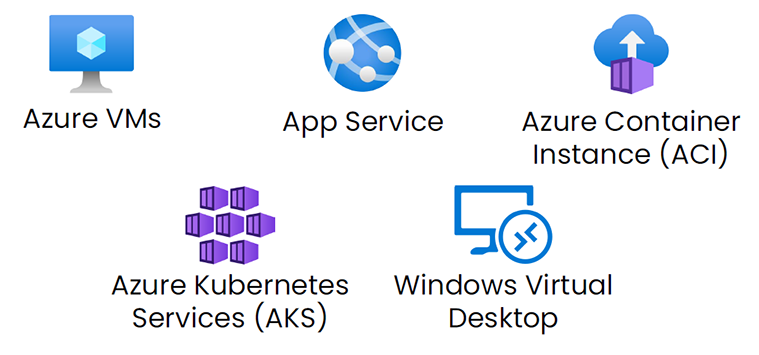
Microsoft Azure Virtual Machines
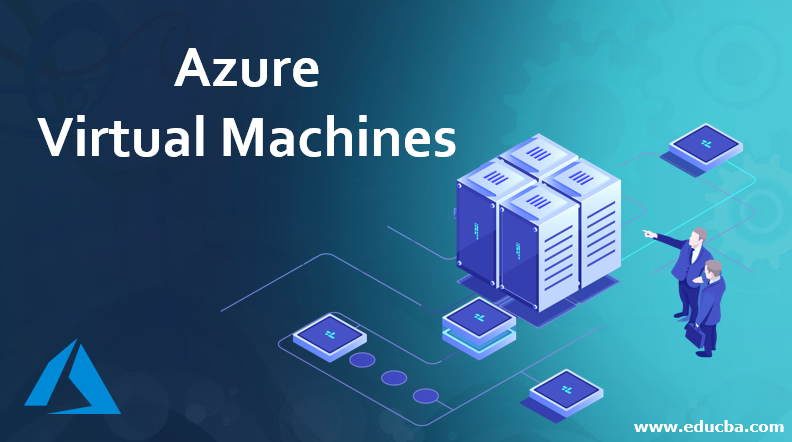
Virtual machines on Azure are virtualized versions of physical computers that contain a virtual processor, memory, storage, and networking interface. Virtual machines (VMs) provide a framework as a service or IaaS. Azure offers VM images pre-installed with the operating system and other software tools. By doing this, you will not have to install anything yourself. These machines are flexible and can be used in a variety of ways. It only requires selecting the operating system, configuring the resources, and establishing a web server.
Microsoft Azure Virtual Machine Scale Sets
Azure App Services
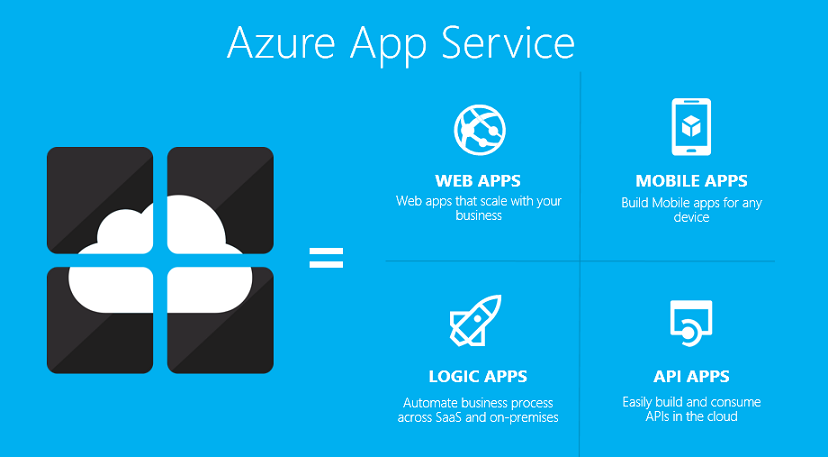
Azure App Service is an example of a platform as a service (PaaS). Therefore, only organizations or you are responsible for managing your business application. Azure handles the rest. There is no need to worry about managing the networks and their underlying infrastructure. Install operating system updates, critical patches, runtime,s, and middleware components. Azure handles all of these. This gives you even more time to focus on your business. The Azure App Service supports a wide variety of programming languages and frameworks such as .NET, .NET Core, Java, Ruby, Node.js, and PHP. App Service can scale resources up or down as your application’s demand changes. This can be done manually or automatically based on metrics such as the CPU’s utilization.
Azure Container Instances
The Microsoft Azure Container Instances service enables us to run these containers directly on Azure without the need for virtual machines. Using Azure Container Instances, you don’t need to worry about provisioning infrastructure or to use higher-level services. Using ACI, you can manage a group of this container on a host machine. For more progressive tasks like coordinated upgrades, service discovery, and automated scaling, it supports complete container orchestrators like Kubernetes.
Key features of Azure Container Instance are:
- Container support for Linux and Windows
- A new container can be conveniently launched using the Azure portal or command line interface (CLI); underlying compute resources are automatically configured and scaled.
- Support for Docker images and public container registries, including Docker Hub and Azure Container Registry
- A fully qualified domain name and IP address can be used to access content on the Internet.
- A container instance CPU cores and memory can be stated explicitly.
Microsoft Azure Kubernetes Services
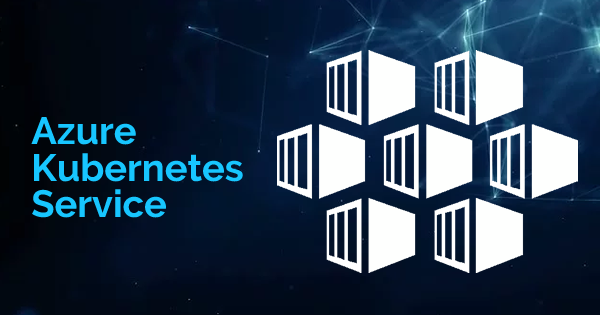
Source: https://www.whizlabs.com/blog/azure-kubernetes-service/
Microsoft Azure Kubernetes Service is a managed container orchestration service based on the open-source Kubernetes system. Any organization can deploy, scale, and manage Docker container and container-based applications using AKS.
The AKS platform became available in June 2018 and is mainly used by software developers and IT operations personnel. The AKS platform also depletes the complexity and overhead associated with deployment and management. AKS provides administrators and developers flexibility, automation, and reduced management overhead.
In addition to automatically configuring all Kubernetes nodes and controlling and managing worker nodes during deployment, AKS also handle many other tasks, such as the integration of Azure Active Directory, connecting monitoring services, and configuration of advanced networking features such as HTTP application routing. Azure Monitor allows users to monitor clusters directly or view all clusters simultaneously.
Microsoft Azure Functions
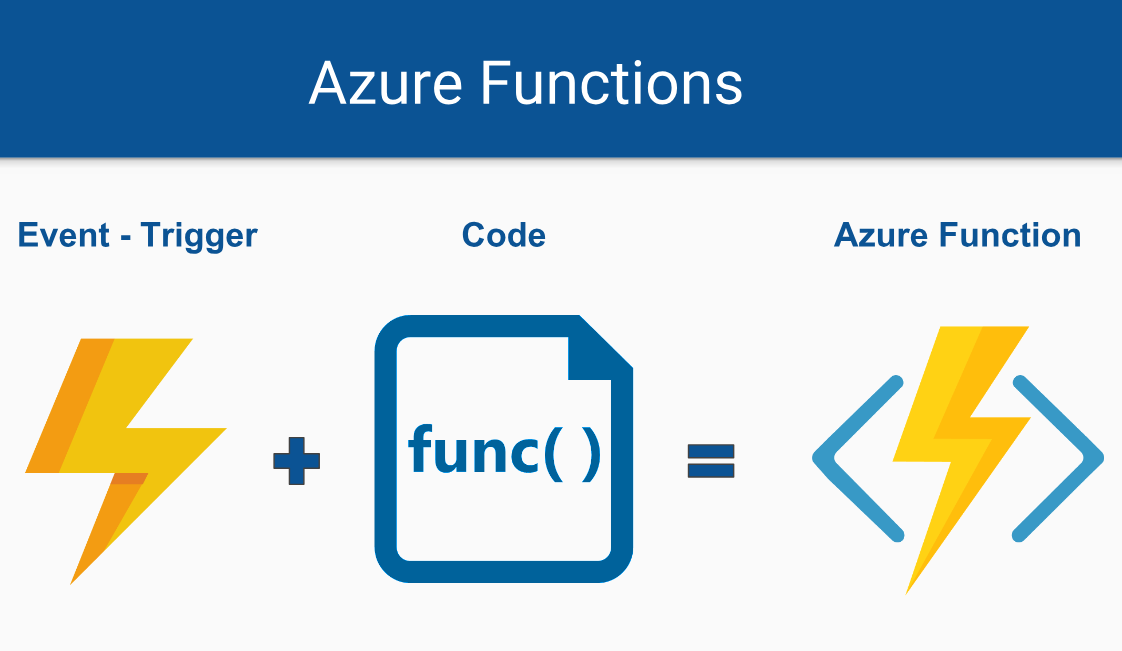
Source: https://kasamshaikh.com/learn-to-build-event-driven-net-apps-using-azure-functions/
Azure functions are serverless concepts of cloud-native design that allow code to be deployed and compiled without any server infrastructure, web servers, or configuration. Several languages can be used to write Azure functions, including C#, Java, JavaScript, TypeScript, and Python. Functions in Azure are scalable. Whenever the number of requests increases, more resources are assigned to the service, and when the number of requests decreases, all the extra resources, and applications drop off automatically.
Advantages of using azure functions:
- Functions in Azure are insubstantial and serverless.
- It is easier to write and deploy Azure functions.
- Due to the lack of a large application, start-up time, initialization, and other events before the execution, Azure functions are fast to perform. An event trigger causes the execution of Azure functions.
- Functions in Azure are compute-on-demand and scalable.
- Whenever the service increases requests, it automatically allocates more resources and drops all the extra resources and application instances.
Microsoft Azure Virtual Desktops
Azure Virtual Desktop is an instanced virtual machine that hosts desktop and app virtualization services in the cloud. Using Azure Virtual Desktop, users can access virtual desktops and remote apps from any device. The platform can combine Microsoft 365 and Azure to provide multi-session Windows 10 experiences, including scalability and IT cost reduction, depending on its configuration.
The modern workforce has become remote and mobile, whether by necessity or because it is a productivity strategy. The workforce is surprisingly dependent on cloud platforms and virtual machines to access the systems and applications it needs to do its jobs anywhere, anytime, and on any device. An Azure Virtual Desktop provides access to a virtual Windows computer that can run typical apps a typical IT-approved Windows computer should run for the organization. Azure’s cloud infrastructure allows businesses to deploy multi-session Windows 10 deployments optimized for multi-user virtual environments. As far as the workers are concerned, Azure Virtual Desktop is similar to a PC on their desk. By entrusting Microsoft and Azure to handle those specifics in the cloud, enterprises can save time and money on purchasing, setting up, deploying, and securing hardware.
Conclusion
In this article, we discussed Azure Compute in conjunction with the various services Azure provided; a few are Azure App Service, Azure Virtual Machines, Azure Container Instances, and Azure Functions. We learned about these different topics and explored Virtual Machine Scale Sets and the decision-making regarding the need to use Azure Virtual Machines. We discussed the various features of Azure Functions like the event-driven scale, micro-billing, and abstraction of servers. We learned about the Azure Logic Apps and got in touch overall with Azure Compute.
The media shown in this article is not owned by Analytics Vidhya and is used at the Author’s discretion.






Thanks for sharing information
Informative article.